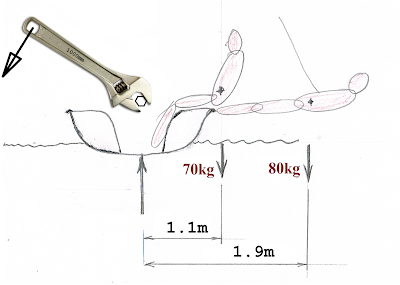Tidal current offset for laylines

When the current direction is across your track, or partly, you will shunted up or down compared to where the boat is pointing. The shunt an gle dep ends on the ratio between the speed of your boat and the component of current that is across your heading. The faster the boatspeed vs the current component, the greater the shunt angle. If sailing with the current is aligned with your track on one tack, it won't deviate your course, but will merely change your speed over the ground. The other tack will have current closer to 90degrees so the shunt is greatest. The rest of this note is brought to you by the number 60. One degree is a slope of 1 in 60, 2 degrees is a slope of 1 in 30. * To estimate the shunt due to current, mostly all you need to remember is 60. Take the ratio of your boatspeed and the speed of the current across your course at 90degrees. That ratio is the slope of how much you are shunted up or down. Multiply the slope by 60 and you have degrees.



